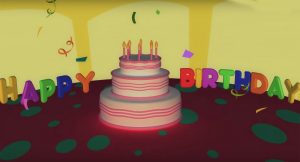A good spot for Followers to plan their next Tango vacation is: Milano. “Milan” in Northern Italy. It is a center for Fashion & Design, it’s also home to Italy’s national Stock Exchange, and it’s also home to high-end restaurants and shops. And it’s also home to Leonardo da Vinci’s very famous mural, “The Last Supper”. So it’s got nice shops. Great history. Lovely food and shopping. But that’s probably not why you’ve landed here on this page. You’re here because of the title, ‘Milan for Followers’. What on Earth does that mean ? It means that if you are a Follower that has danced for a good length of time, and you have done the festival scene, the workshop to workshop cycle, explored the Marathon scene, and even the Encuentro scene, you’ve probably been to Buenos Aires by now and you’re wondering what’s next ? Milan is your next destination.
Why ?
Several reasons.
1.) The men dress nicely for Milongas. No. It’s true. They actually dress up for Milongas. And as has said before in Vol 3. (Truism 1096), nothing screams ‘come hither’ more to a woman than a man in a tailored suit! And in this case, usually the shoes are handmade as well.
2.) Then there’s the fact that they smell nice.
3.) They actually know how to dance musically, within the line of dance. This is floorcraft, within the construct of the music. Which usually results in dancing the shit out of a Milonga. And then there’s…
4.) They are usually exceptionally personable and know how to treat a lady (usually). And last but not least…
5.) The food is f#cking divine!
So if #’s 1 thru 4 don’t do it for you at the very least you’ll have some amazing food that’ll blow your mind!
To be clear: Before you start planning your next Tango vacation for Milan, there are a few things you sort of need to do first and foremost. 1.) You need to work on your foundation. Make it clean. Make it clear. Make it consistent. We have some tools here on Tango Topics to help you with that in our Follower Technique series. So what does “Clean” and “Clear” mean ? It means that you want to work on your walk, and the stability of that walk, you should be able to walk independently of your L/lead in a pair of heels. So if you can walk without wobbling, without wavering, without needing to hold on to anyone, or anything (no balance bars!), then you’re onto something. If you can make it look elegant while you’re at it so much the better. This is a facet to “Clean”. If you haven’t analyzed your walk, and how you’re extending your legs forward, side, and back, and how you do that is the most efficient, the most economical, in all seven foundational moves, then you may want to do that. The reason is that when you travel to distant lands, and you’re the same dancer without modifying anything about yourself, you’re going to be presented with the same types of dancers that you always attract. However, upping your foundational clarity tends to change who’s watching you and why! This is good advice whether you’re going to Milan or Buenos Aires or anywhere else in the world for Tango. Work on your foundation, always. It will do a world of good for you.
Which also brings up another point: Private Lessons. If you can afford a weekly private lesson with a teacher that can identify your foundation issues, and get you to reconceptualize them, visualize them, detail them, and then start to embody them, then you’re on to something. And so that we’re clear, working with a Teacher that walks you around the room for an hour, or dances you around the room, isn’t going to change anything. It will give you false impressions that you’re actually improving instead of doing exercises, as well as repetitions, and detailing what your walk wants to be using visual aids, video playback, close up views, explanations of how and what to do and why. This is what your private lessons on foundation should be. Start with the Back Step first and foremost because it’s the most common step for you. Again this stuff is relevant whether or not you’re traveling to Milan or Buenos Aires. 😉
Next, working on your stability, as well as your embrace, they sort of go hand in hand. And they’re kind of important. Working on your stability while walking independent of your L/lead will force you not to use the Embrace as a way to stabilize yourself using your arms, or hands in your Forward Steps, your Side Steps, your Back Steps, or your Follower’s Molinete or the Milonguero Turn, or your crosses, and most especially your Traveling Ochos. Thereby the embrace is free to be what it needs to be, an embrace construct that you can mold and use to your purposes! 🙂
Two Caveats: There are TWO caveats that you need to be aware of before you set off for Milan.
The first is an item we have detailed here on Tango Topics, and that’s the ‘Italian Solution’ to an embrace quandary that happens for every Lead in the world, that the Italians have solved (to a degree), and as a Follower, you should be prepared for it to happen almost immediately. If you’re not certain what the Italian Solution is, go follow the link above and you will have to register as a free user to see it, but you’ll get the general gist of it. The problem is clearly spelled out for anyone visiting the site, but you really do need to register (it’s free) to see the full solution and what it is and why it exists.
Secondly, to a lesser degree but still present, be prepared for a bit of attitude, bravado, and show off behavior now and again, but it’s all in an effort to show you off, not necessarily themselves per se. Which is to say that more than a few lessons on Adornments & Embellishments wouldn’t kill you (which is really an expression of your foundation in time to the music), and that means you really do have to know your music. At the same time while the bravado exists, there’s a reason for it, they expect and want you to show YOU off. They will create space for you do just that. But at the same time, they’ll expect you Take The Space, not wait for the space to make those things happen.
“Taking the Space“, in this case, means that you’re going to be a bit more proactive than you usually would, you’re going to be bit more hyper-aware, and if you’re led into say a Molinete or a Traveling Ocho, or an Argentine Cross AND you’re listening to the music, and you hear something in the music that fits with that particular piece of vocabulary that you’re currently in, then you accentuate that vocabulary by engaging an Adornment within the time that you have and not being apologetic about it. Be powerful. Be strong. Own your steps. Never say “Sorry”. Ever. Never apologize for what you’re been led to do. If you’re being honest and you Followed what you felt happening, then you have nothing to apologize for. That’s “Taking the Space” and that’s why it’s crucial to practice your potential Adornments relentlessly when you’re sitting, standing, waiting for something else to happen, standing and talking to someone, not just on the dance floor but off the dance floor. It is an imperative that you start to play with those ideas sooner rather than later in heels.
These are the two Caveats to dancing in Milan. [ls_content_block id=”12273″ para=”yes”]
The Tango Topics Opinion: Let’s get something straight no one is bashing your skills as a Follower. No one. At the same time, you do need to up your game. This is a whole different class of L/lead that you’re getting in Milan, Florence, and Torino. They’re more musical, playful, and engaging. They’re also a bit more demanding, and expectational than your run of the mill L/lead then you’re used to experiencing. They’re also a bit more temperamental and mercurial. Then there’s the whole clothing thing. These are MEN we’re talking about here. So here’s a good piece of advice, look at the women around in Milan and Northern Italy. They dress for success. Trust us, we know, this is not exactly empowering women with this stuff. From one perspective you’re playing into the old paradigm of pleasing a man with what you’re wearing. You’re enticing him to want you simply because of what you’ve got on your body. You can use this stuff to your advantage, not as a negative. Men are visual creatures. Remember that. It will go a long way to getting you what you want, getting you the dance. So give them a little visual. However while it may get you the dance that you want, it will not keep the dance that you want. For that to happen, that’s why we suggested working on your foundation! See ? These things go hand in hand.
In the end, spend more than two weeks there, about a month but be warned once you go down this pathway, you will not want to come back home. At all. These men are insanely good, insanely musical, and they do know how to pursue a woman. You’ve been warned. 😉 YMMV.
- Glossary: Follower's Molinete
- Glossary: Follower Technique
- Glossary: Milonguero Turn
- Glossary: Traveling Ocho
- Glossary: Argentine Cross
- Glossary: Buenos Aires
- Glossary: Encuentro
- Glossary: Floorcraft
- Glossary: Foundation
- Glossary: Side Steps
- Glossary: Vocabulary
- Glossary: Adornment
- Glossary: Exercise
- Glossary: Molinete
- Glossary: Tango Festival
- Glossary: Tango Marathon
- Glossary: Milonga
- Glossary: Embrace
- Glossary: Llead
- Glossary: Practical Tango Advice
- Glossary: Walking
- Glossary: Cross
- Glossary: Close Embrace
- Glossary: Lead
- Glossary: Force
- Glossary: Ochos











